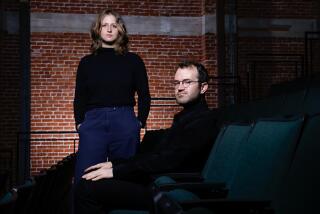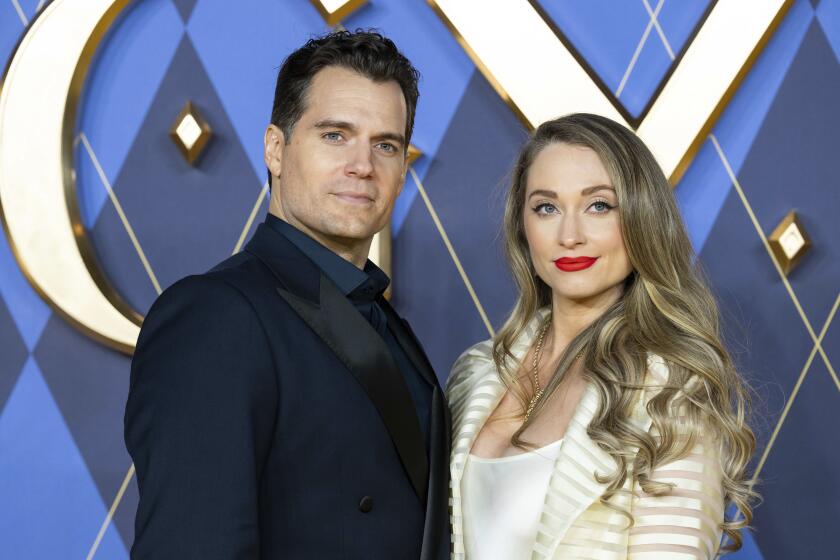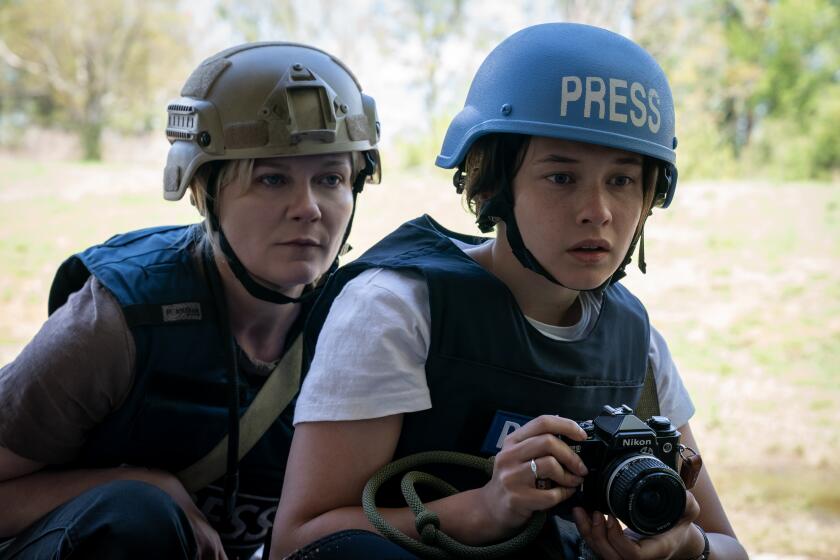Why the Tribeca Film Festival is looking beyond film for the future, and present, of festival programming
As the Tribeca Film Festival prepares to open its 17th edition Wednesday in New York, the Cannes Film Festival and Netflix have assumed a scorched-earth policy with each other and the general state of theatrical film exhibition is, at best, weak.
There’s a philosophical, commercial and maybe even spiritual schism occurring: Is the film festival, in a meta sense, obliged to hold traditional cinema sacrosanct? If Cannes is high church, Tribeca is nailing its programming guide to the cathedral doors.
One of the bigger hits at last year’s festival was “The Handmaid’s Tale,” courtesy of Hulu. For the second year, there’s a program devoted to independent TV pilots. The section devoted to New Online Work (NOW) routinely sells out, and the virtual reality showcase “Tribeca Immersive” is a cutting-edge crowd magnet.
At what point do you stop calling the Tribeca Film Festival a film festival?
“We’ve thought about it,” said Jane Rosenthal, a bit conspiratorially, as her Tribeca festival partner Robert De Niro ate a bowl of soup. “But there’s part of the founders’ history that’s so ingrained with film that you don’t want to lose that.”
“We’ll see,” De Niro said, looking up, “as time goes on.”
In the time that’s already gone on, the Tribeca Film Festival has seen nearly everything around it change. Founded by Rosenthal, De Niro and Rosenthal’s ex-husband, Craig Hatkoff — “in the wake of 9/11,” as it’s virtually always described — the festival was meant to revitalize a neighborhood that had been dust-shrouded, grief-stricken and seemingly on the ropes.
Now, real estate commands platinum prices; the bohemians have been driven away like barbarians from the gates of Rome; most of the festival takes place elsewhere around Manhattan.
But more importantly, the culture being celebrated hasn’t just changed, it’s undergone a revolution — one in which Tribeca finds itself on the side of the insurgency.
“The creators don’t seem bound by traditional divisions anymore, so why should we?” asked Cara Cusumano, director of programming, during an interview at Tribeca’s Manhattan offices. “We take the lead from the creators and follow the work we find most inspiring. As we noticed that work was expanding beyond feature films, we created platforms in the festival for that work.”
Those platforms aren’t brand new — for the last several years they have included NOW, Tribeca TV, Tribeca Immersive and, of course, Tribeca Talks, which are apt to involve luminaries from outside the realm of independent cinema, which TFF long championed. But the arguments they inspire are red hot.
If Cannes is high church, Tribeca is nailing its programming guide to the cathedral doors.
“Until film exhibition can figure itself out, we have an obligation to [present] stories on any platform,” said Rosenthal, before referencing upheaval in the New York film exhibition scene. “We’re losing 8,000 seats in downtown Manhattan theaters. They turned the Ziegfeld [theater] into a party space. They’re building theaters in Saudi Arabia. Here, they’re pulling them down.”
Rosenthal repeated the oft-made point that the content on the likes of HBO, Hulu and Netflix used to be the purview of Hollywood and added — citing two films she made with De Niro — “We’d never get ‘Wag the Dog’ made today; I don’t think you’d get ‘Meet the Parents’ made today. They’d be doing it on Netflix.”
She did concede that watching comedies without an audience seemed a little depressing. De Niro agreed: “I don’t look at a certain movie that I’ve done unless I look at it with an audience,’ he said. “It’s like watching it in a vacuum.”
And in a sort of backhanded way, Tribeca cultivates that mass-audience experience.
“It’s important to embrace the ways audiences are consuming their media,” said Loren Hammonds, who programs TFF Immersive as well as film. “One thing we take responsibility for is convening people. You can watch Netflix on your laptop, at home, by yourself. But it’s quite a different experience to come to Tribeca and see a Netflix film that might premiere in a few weeks or few months, but see it with an excited and culturally curious audience. And have the filmmaker there. And the subjects there. That’s something we stand behind.”
Rosenthal and De Niro are just finishing Martin Scorsese’s “The Irishman,” a big budget period production slated to premiere on Netflix in 2019. Their colleague Paula Weinstein, executive vice president of Tribeca Enterprises, produces the streaming series “Grace & Frankie.”
They belong to a more theater-oriented generation, “but as a festival,” Weinstein said, “our responsibility is to say, ‘Here is the wave of the future. As a festival, you want to say, ‘Here’s the online work, here’s independent filmmaking and here is Netflix or Amazon or network television.’”
Or everything at once. “For the first time,” said Liza Domnitz, who programs TV/online, “we have something, ‘Dead Women Walking,’ that comes from an online studio, Blackpills, that was conceived as an episodic series and it will be on their platform eventually but we’re playing it as a feature film. I think they have hopes of also releasing it theatrically.
“It’s a good example of the blending of these platforms,” she said. “Here’s this thing that’s meant for online, we’re putting it in the feature program and they’re hoping to get acquired by a TV studio and develop it further.”
As Cusumano put it, “We’re platform agnostic.”
More to Read
Only good movies
Get the Indie Focus newsletter, Mark Olsen's weekly guide to the world of cinema.
You may occasionally receive promotional content from the Los Angeles Times.






